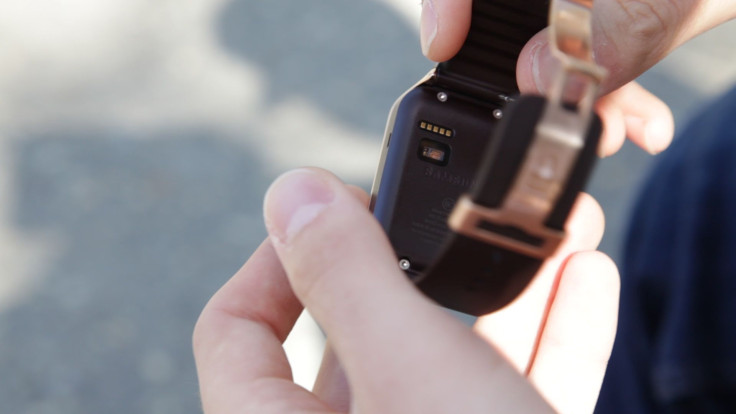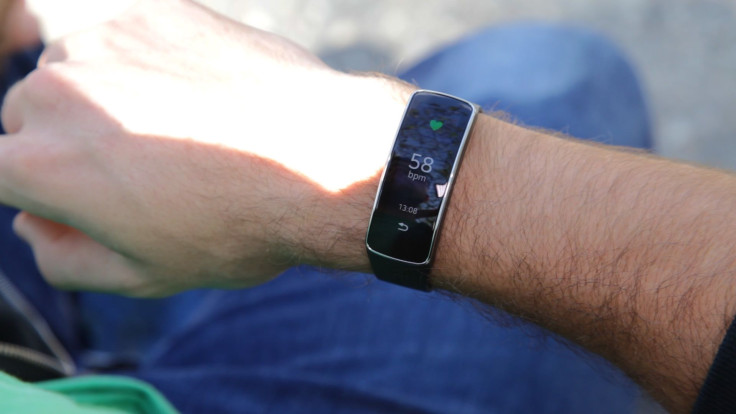Samsung Gear 2 And Samsung Gear Fit Review: Last Year's Technology, Today

Samsung Electronics is nothing if not prolific. In its quest to occupy every conceivable market niche, the company ends up competing with itself in tablets, phones, laptops and, yes, wearable technology.
Case in point: Last spring Samsung released two wearables on the market, the Gear 2 and Gear Fit. But, there are plenty of other wearables on the market, and Samsung can't bank on its name to impress consumers.
Do Samsung's wearables stand the test of time? And how do they stack up? We put them together to see which (if either) is worth the purchase.
Design
Both of these devices run on Samsung's old wearable operating system, Tizen. Keep in mind that Tizen is not Android Wear; it's much more limited. That said, both the Gear 2 and Gear Fit have very nice, customizable active-matrix organic light-emitting diode screens; they're bright enough to be useful outdoors and sensitive enough to touch inputs that you won't be frustrated. They're not as good as Samsung's phones in looks or response, but considering the simplicity of the interactions, it's hardly an issue.

Plastic bands are standard on both, plus pedometers and heart rate monitors are built in. Past those, these devices leave rather different impressions.
Even in gaudy gold and chocolate garb, the Gear 2 could pass as a regular watch, if only at a quick glance. The folding clasp is a nice touch, even though the band it’s attached to is hard plastic. On the upside, it’s relatively simple to adjust and decently comfortable to wear, though you probably won't impress any analog watch aficionados.
The pièce de résistance is the two megapixel camera up top (something still only seen on the Gear line) that lets you take semi-stealthy photos in public. (The watch still makes a shutter sound when you take a photo.)

But from there, things go downhill for the Gear 2. The watch's face may be fantastic, but the rest of its parts lack pizzazz. Even the underside is made of really cheap, ugly plastic. This is especially difficult to stomach when you realize that the Gear 2 costs $300.
Its opponent in this instance is a bit different. The Gear Fit is a fitness band instead of a full-on smartwatch, although it's 90% as capable as the Gear 2 since it runs on the same OS. But unlike the watch-inspired Gear 2, the Gear Fit bears a strong resemblance to other bands with its long, rectangular shape. Because of its band shape, the screen actually stands out; it got a few stares on my morning commute. One woman looked me up and down three times. Maybe wearable tech makes you a more attractive man (highly doubtful). Either way, it garnered some attention.

The Gear Fit also has a cheap plastic band similar to the Gear 2, but it makes a little more sense here (and not only because the Gear Fit is $150, half the price of the Gear 2) -- ideally, you’d get a fitness tracker sweaty, and the plastic band shrugs off sweat.
But the Gear Fit also sort of trying to invade some of the Gear 2’s smartwatch territory; as mentioned earlier, it runs on the same Tizen OS. So, it shows pop up notifications, messages, voicemails and so on. There's a problem with this, though: The text is usually awkwardly broken, since you’ll probably have the display on vertical mode. Sure, there’s a horizontal option, but then you have to be one of those people who wears things on the inside of his/her wrist. Even then, messages still get cut off.
App
Both of these are tied to S Health for fitness tracking. Which you need to get from the Samsung App store and sign in to a Samsung account to use properly. Sigh. This is primarily a complaint for Samsung users with older phones -- the Galaxy S5 already has S Health on board, and it’s got a pedometer and a heartbeat sensor. So if you already have an S5, your phone renders a lot of these devices’ fitness functions superfluous. On my older S3, they’re a little more useful, but they’re still pretty limited -- this is probably because they’re not running on Android Wear.
Considering Samsung’s just released the Gear Live, which does run Android Wear, the Gear 2 feels especially limited.

The user interface is at least simple on both the Gear 2 and Gear Fit, so there’s nowhere to get lost. There are a few simple screens for notifications and widgets, but it’s just not a robust enough experience to rave about.
Performance
So that said, what can these things really do?
The Gear 2 is capable, but it's not $300 capable. Sure, it can still be used to accept or reject calls, and it can be used as a TV remote -- that was a bizarre surprise -- but it isn't large enough to read an email on. It can play your music, either over Bluetooth to a wireless headset (if you transfer files to the watch’s onboard 4-gig hard drive), and it can control your phone’s media player directly if you so choose.

The Gear Fit can control your phone’s music player as well, through the same onboard “media control” app, but it doesn’t have storage space on board. Either way, it’s actually pretty useful if you shuffle your library on a run -- you won’t have to stop running to change tracks.
But neither holds a charge for more than 3 days.
At least you can carry on an entire conversation on the Gear 2 -- that is, if you don’t mind looking like a low-rent Austin Powers.
Value
Again, the Gear 2 is $300. Let that sink in. You could buy a nice watch and a good fitness tracker for less than that. Then consider that Samsung also sells the Gear 2 Neo, which is pretty much the same device without the camera, for $200.
The Gear Fit is now $150, and while it’s not as fitness-oriented as a Jawbone or FitBit, it’s useful enough to be at least considered. But you’d still have to really want one to pay that price.
Either way, if you don't have a Samsung device to pair these to, you can't use them. Samsung's understandably trying to build brand loyalty, but taking Apple's approach to hardware compatibility in the open-source, laissez-faire Android market might alienate potential customers.
Conclusion
The Gear 2 is too expensive for what it brings to the table. The Gear Fit has a place as a hybrid tracker/smartwatch but it's tied to the underwhelming S Health app. Both are pretty difficult to justify, especially with the release of the Gear Live.
© Copyright IBTimes 2025. All rights reserved.






















